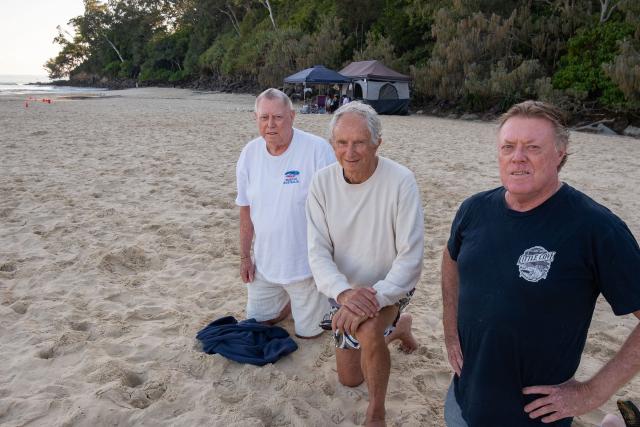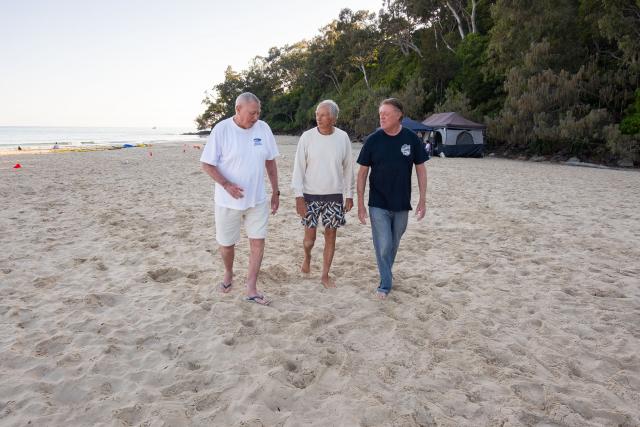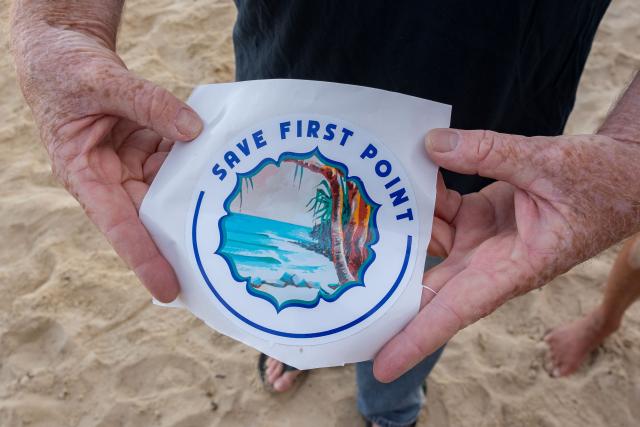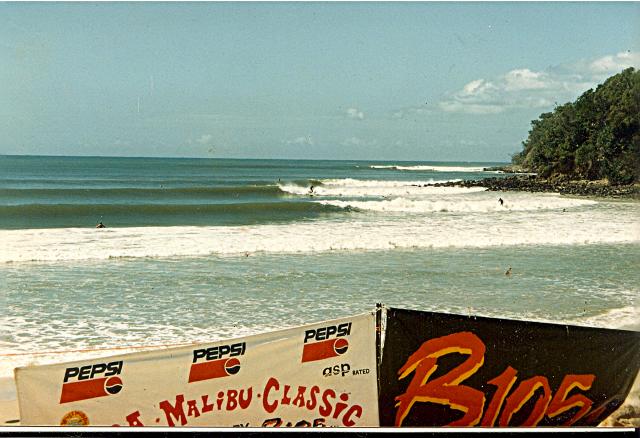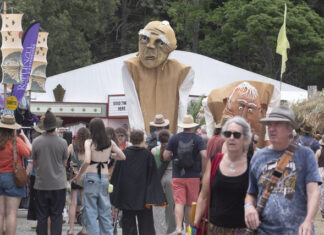An online petition created by veteran Noosa surfers who long for the return of the classic waves of First Point is starting to gain traction, with several hundred supporters now.
In the petition, at savefirstpoint.com.au, the Save First Point Action Group “calls on the Noosa Council to cease all future sand pumping onto the area known as First Point at Noosa Heads – and to work with interested groups to find a solution to the present situation”.
The site goes on to explain: “First Point Noosa is renowned worldwide as one of the world’s finest surf breaks, but it is currently buried under hundreds of thousands of cubic metres of sand.
“Positioned within the internationally recognised Noosa World Surfing Reserve, it’s perfectly formed waves have been a magnet to surfing families since it first began appearing in surf movies and magazines in the early 1960s.
“But it breaks no more.
“Due initially to the effects of offshore sand dumping, followed by sand pumping by the Noosa Council, and two recent sand flow deposits following flooding, we need a pause to future sand-pumping to allow First Point and Little Cove to recover naturally. We are calling on interested parties and the surfing public from across Australia and around the world to help us Save First Point.”
Noosa Today spoke to the lifelong local surfers behind the petition early last Saturday morning before the cabana crowd had taken over the space where perfect waves used to break, but not ahead of an early-bird family who had made a campsite on sand above the inside section.
Retired financial planner and surf historian Paul Beavear has been surfing First Point for almost 60 years, former Hastings Street businessman Kim De Marco was the founding president of the Noosa Malibu Club 40 years ago, while the “youngster” of the group, chef Reid Johnson, has been a competitive force on the points for quarter of a century. Understandably, they are all passionate about seeing First Point return to its former glory.
Says Kim: “From my perspective as the founding president of the Malibu Club, this was its birthplace. Just a group of guys out there surfing and someone said, wouldn’t it be a great idea to get a club together? This was where it all started.”
Paul: “They’ve been recording sand levels here for 60 years and over that time there’s never been anything like this. It’s unprecedented.”
Reid: “The last council sand pumping was in September 2019, just before the school holidays, and we’re still feeling the effects because subsequent weather patterns have caused the sand to be trapped.”
The message all three want to send to the council loud and clear is that, in the future, they should let the beach shape itself.
Says Paul Beavear: “We know that we’re not likely to see weather conditions that might change the way things are this year or even next year, but it will happen eventually, and that’s when we want to see positive action to keep the beach that way.”
As Noosa Today reported back in March 2021, in an article titled, The science behind the sand, the massive buildup of sand which has all but destroyed First Point’s global reputation as (arguably) one of the world’s great point break surfing waves and (certainly) one of the best longboard waves in the world, has been caused by a complex set of factors, both natural and man-made, and there is no easy fix. What we do know is that, in time, storm swell events will gauge out the record sand level (perhaps as much as 100,000 cubic metres) allowing perfect waves to stand up over a rock and sand bottom and peel down the point as they once did. But the Save First Point Action Group is playing the long game, hoping to convince the council – and the general public – that we need to be proactive to ensure that the natural asset doesn’t disappear again.
The problem with that is that most people don’t surf (despite evidence to the contrary every time we have a swell event) and beachgoers think a Sahara of sand on which to plonk their cabanas is the best thing since sliced bread, while accommodation managers and Hastings Street business folk panic every time the beach erodes and a few rocks are exposed, to the point of privately organising the dumping of several truckloads of sand some years ago just ahead of the Christmas rush.
Interestingly, the same group of scientists and academics who have analysed movements of waves and sand and their impact on coastal environments – University of Sunshine Coast’s Daniel Wishaw and Professor Javier Leon among them – have also pioneered the study of “surfonomics”, which puts a dollar value on the financial benefit to the broader community of the proximity of world class surf breaks.
So hopefully a balance will be found.
Meanwhile, the USC study upon which our 2021 article was based, predicted that in coming years the extension of the tropical zone through climate change will mean more erosion events than accretion, requiring greater sand management to stabilise the beach.
So, if you’re a sand-lubber or a sandcastle builder, make hay while the sun shines.
If you’re a First Point surfer, be patient. Our time will come.
Footnote: The Save First Point Action Group is planning a rally to increase awareness, details to come at savefirstpoint.com.au and Save First Point Facebook page.

